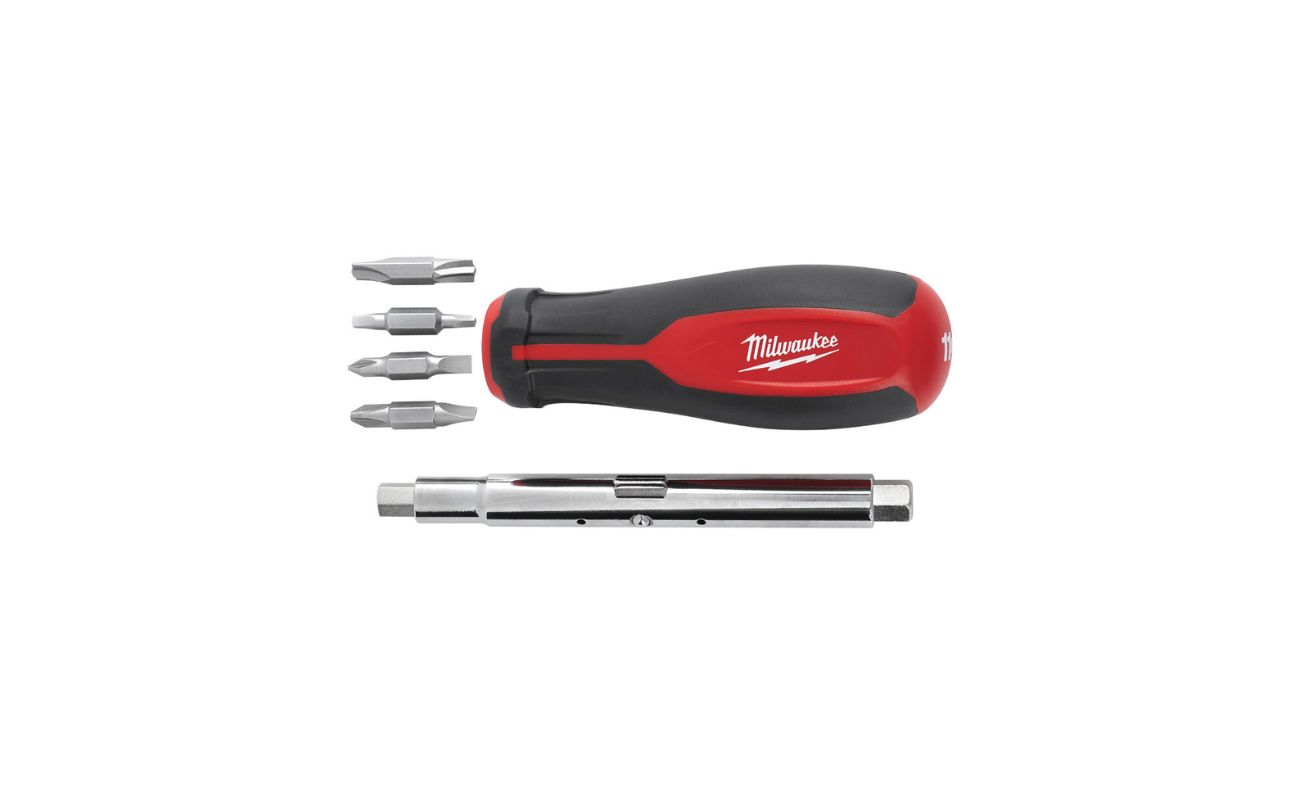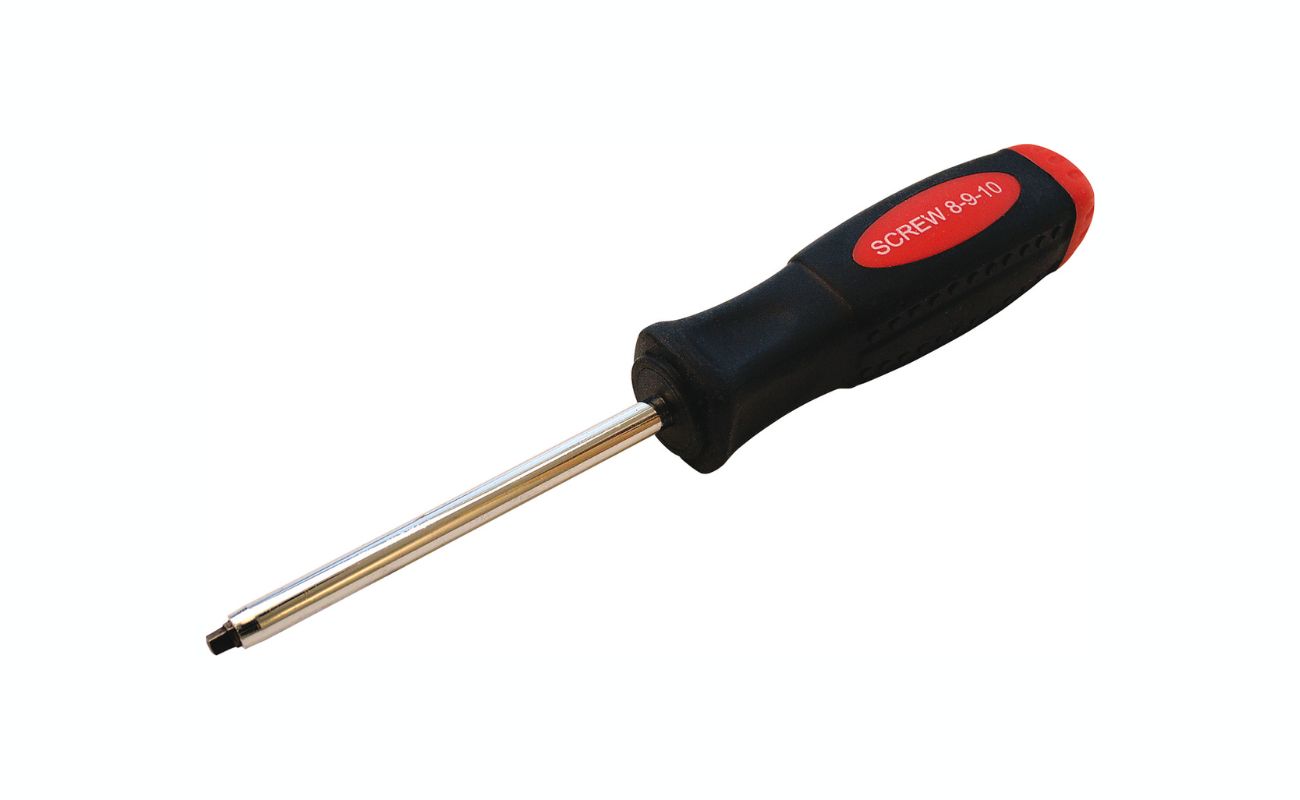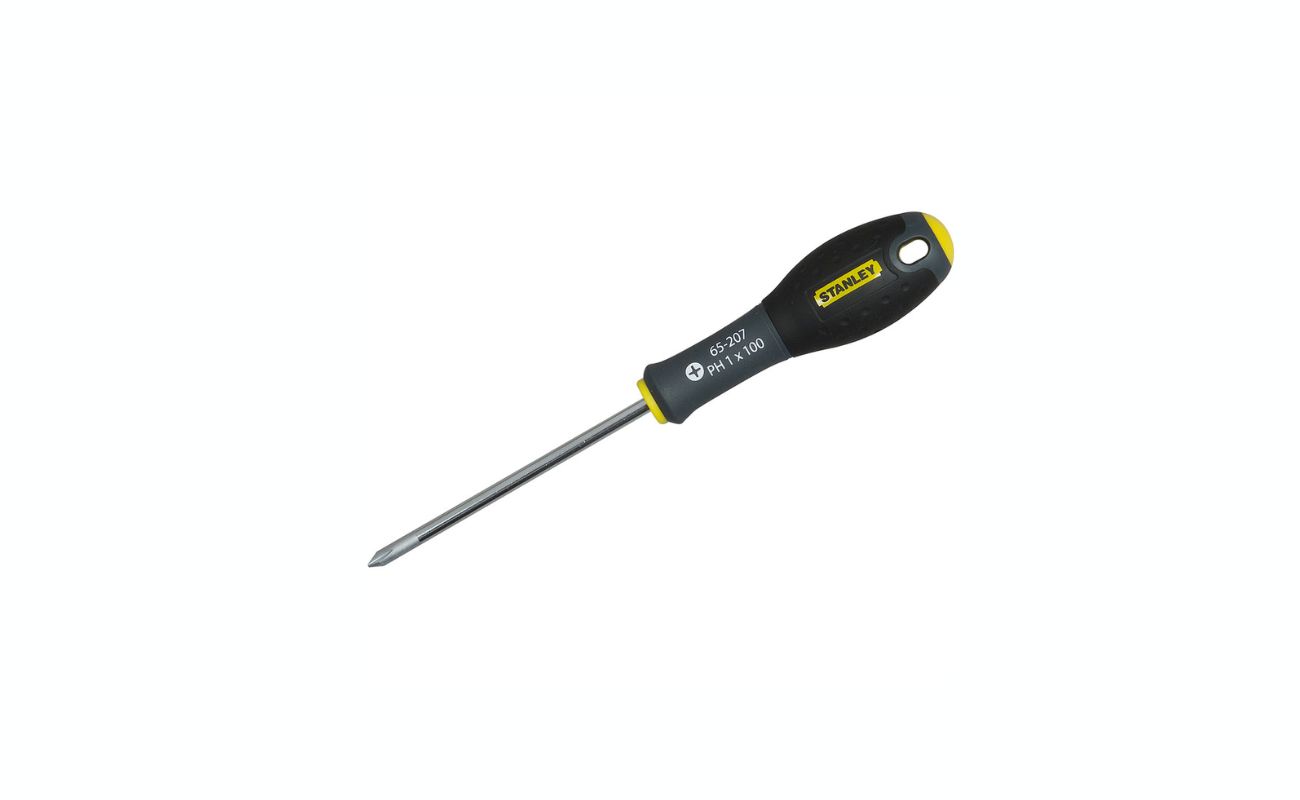Home>Renovation & DIY>Tools & Equipment>What Is Ratcheting Screwdriver


Tools & Equipment
What Is Ratcheting Screwdriver
Modified: January 9, 2024
Discover the benefits of a ratcheting screwdriver, a versatile tool for various tasks. Find out how this essential tool can improve your toolkit and enhance your efficiency.
(Many of the links in this article redirect to a specific reviewed product. Your purchase of these products through affiliate links helps to generate commission for Storables.com, at no extra cost. Learn more)
Introduction
Welcome to the world of tools and equipment! Today, we're delving into the realm of ratcheting screwdrivers. These versatile tools are a staple in the arsenal of both professionals and DIY enthusiasts. Whether you're assembling furniture, working on electronics, or tackling home improvement projects, a ratcheting screwdriver is a reliable companion that simplifies the task at hand.
In this comprehensive guide, we'll explore the ins and outs of ratcheting screwdrivers, from their basic functionality to the various types available on the market. By the end of this journey, you'll have a solid understanding of what makes these tools indispensable in the realm of fastening and unfastening screws.
So, let's roll up our sleeves and embark on an enlightening exploration of the ratcheting screwdriver, uncovering its inner workings, advantages, disadvantages, and the key factors to consider when selecting the perfect one for your needs. Whether you're a seasoned professional or a budding DIY enthusiast, this guide is your gateway to mastering the art of screwdriving with precision and efficiency.
Key Takeaways:
- Ratcheting screwdrivers revolutionize screwdriving with continuous motion, ergonomic design, and versatile bit options, making fastening tasks efficient and comfortable for professionals and DIY enthusiasts alike.
- When choosing a ratcheting screwdriver, consider handle design, bit compatibility, durability, and additional features to ensure optimal performance and comfort, empowering users to tackle fastening tasks with precision and ease.
Read more: How To Use A Ratchet Screwdriver
Definition of Ratcheting Screwdriver
A ratcheting screwdriver is a specialized hand tool designed to tighten or loosen screws with enhanced ease and efficiency. What sets it apart from a traditional screwdriver is its ratcheting mechanism, which allows for continuous turning of the screw without the need to lift and reposition the tool.
At the core of a ratcheting screwdriver is a handle that houses a ratchet mechanism and a bit holder. The ratchet mechanism enables the screwdriver to engage in one direction while disengaging in the opposite direction, thereby facilitating smooth and swift screwdriving motions. This feature eliminates the need to lift the screwdriver off the fastener, making it a time-saving and ergonomic alternative to conventional screwdrivers.
Ratcheting screwdrivers often come with interchangeable bits, allowing users to adapt the tool to various screw types and sizes. Additionally, some models feature a bit storage compartment within the handle, ensuring convenient access to a diverse range of bits without the hassle of searching for separate accessories.
These tools are available in a variety of handle designs, from traditional straight handles to T-handles, offering users the flexibility to choose a style that best suits their grip preference and comfort level. Furthermore, ratcheting screwdrivers may incorporate additional features such as magnetic bit holders, ergonomic grips, and built-in LED lights to enhance functionality and user experience.
In summary, a ratcheting screwdriver is a modern iteration of the conventional screwdriver, equipped with a ratchet mechanism that enables continuous and efficient screwdriving. Its ergonomic design, compatibility with interchangeable bits, and diverse handle options make it a versatile and indispensable tool for a wide range of fastening applications.
How Does a Ratcheting Screwdriver Work?
Understanding the inner workings of a ratcheting screwdriver unveils the magic behind its seamless operation. At the heart of this tool is the ratchet mechanism, which revolutionizes the process of fastening and unfastening screws.
When using a ratcheting screwdriver, the ratchet mechanism allows the handle and the bit to rotate freely in one direction while engaging with the screw, enabling continuous tightening or loosening without the need to reposition the tool. This is achieved through a series of gears and a pawl, a hinged catch that allows motion in one direction while preventing it in the opposite direction.
As the handle of the ratcheting screwdriver is turned in the desired direction, the pawl engages with the gears, transmitting the rotational force to the bit. This seamless transfer of motion ensures that the screwdriver can operate in a ratcheting manner, moving smoothly and efficiently without requiring the user to lift and reposition the tool after each turn.
Additionally, the bit holder of a ratcheting screwdriver accommodates interchangeable bits, allowing users to adapt the tool to different screw types and sizes. This versatility enhances the functionality of the ratcheting screwdriver, making it a go-to solution for various fastening tasks.
Moreover, some ratcheting screwdrivers feature a switch near the handle that allows users to toggle between clockwise and counterclockwise ratcheting directions, providing further control and convenience during use. This feature enables users to quickly switch between tightening and loosening screws without adjusting their grip or the position of the tool.
Overall, the ratcheting screwdriver’s ingenious design and ratchet mechanism work in harmony to simplify the process of screwdriving. By enabling continuous motion in one direction and accommodating interchangeable bits, these tools empower users to tackle fastening tasks with precision, efficiency, and minimal effort.
Advantages of Using a Ratcheting Screwdriver
Embracing the use of a ratcheting screwdriver brings forth a myriad of advantages, making it a valuable asset in various professional and DIY settings. Let’s delve into the compelling benefits that set ratcheting screwdrivers apart from their traditional counterparts.
- Efficiency: The ratcheting mechanism enables continuous turning of the screw without the need to lift and reposition the tool, resulting in a significant time-saving advantage. This streamlined operation allows users to complete fastening tasks with enhanced efficiency and minimal interruptions.
- Ergonomics: Ratcheting screwdrivers are designed with user comfort in mind. The ergonomic handle designs and the seamless ratcheting action reduce hand fatigue and strain, promoting a more comfortable and sustainable screwdriving experience, especially during prolonged use.
- Versatility: With interchangeable bits and compatibility with various screw types and sizes, ratcheting screwdrivers offer unparalleled versatility. This adaptability allows users to tackle a wide range of fastening applications without the need for multiple tools, streamlining their toolkit and enhancing convenience.
- Convenience: The incorporation of bit storage compartments within the handle ensures quick and easy access to a diverse range of bits, eliminating the hassle of searching for separate accessories. This feature enhances user convenience and promotes a clutter-free work environment.
- Control: The ability to toggle between clockwise and counterclockwise ratcheting directions provides users with precise control over the tightening and loosening of screws. This feature allows for seamless adjustments and swift transitions between different fastening tasks, enhancing overall user control.
These advantages collectively position ratcheting screwdrivers as indispensable tools that elevate the efficiency, comfort, and versatility of screwdriving activities. Whether in professional workshops, construction sites, or home improvement projects, the benefits of using a ratcheting screwdriver resonate with users seeking optimal performance and convenience in their fastening endeavors.
A ratcheting screwdriver is a tool with a mechanism that allows the user to turn the screwdriver without having to lift and reposition it. This makes it easier and faster to use, especially in tight spaces.
Disadvantages of Using a Ratcheting Screwdriver
While ratcheting screwdrivers offer a host of advantages, it’s important to consider their limitations and potential drawbacks. Understanding the disadvantages associated with these tools provides a balanced perspective and allows users to make informed decisions when selecting the most suitable screwdriving solution for their needs.
- Complexity: The ratcheting mechanism introduces additional complexity compared to traditional screwdrivers. This complexity may require a learning curve for users who are accustomed to conventional tools, potentially impacting initial ease of use.
- Price: Ratcheting screwdrivers, especially those with advanced features and ergonomic designs, may come at a higher price point compared to basic manual screwdrivers. This cost factor should be considered when evaluating the investment in these tools.
- Maintenance: The intricate ratcheting mechanism and moving parts may require periodic maintenance to ensure optimal performance and longevity. Users should be mindful of the maintenance requirements and factor them into the overall tool care regimen.
- Size and Bulk: Some ratcheting screwdrivers, particularly those with built-in bit storage compartments and additional features, may be bulkier than traditional screwdrivers. This increased size may impact portability and storage convenience, especially in compact toolboxes or on-the-go tool kits.
- Specialized Use: In certain specialized applications or industries, traditional manual screwdrivers or power screwdrivers may be preferred over ratcheting screwdrivers due to specific operational requirements or preferences. Understanding the specific needs of the task at hand is crucial in determining the most suitable screwdriving solution.
By acknowledging these potential drawbacks, users can make informed decisions regarding the adoption of ratcheting screwdrivers in their tool collection. While the advantages often outweigh the disadvantages, a comprehensive understanding of both aspects empowers users to leverage these tools effectively while considering their unique characteristics and limitations.
Read more: What Is A Slotted Screwdriver
Types of Ratcheting Screwdrivers
Ratcheting screwdrivers are available in a diverse array of types, each tailored to specific applications, user preferences, and operational requirements. Understanding the various types equips users with the knowledge to select the most suitable tool for their fastening tasks. Let’s explore the key types of ratcheting screwdrivers and their distinguishing features:
- Standard Ratcheting Screwdrivers: These are the most common type of ratcheting screwdrivers, featuring a traditional straight handle design with a ratcheting mechanism. They are versatile and well-suited for a wide range of fastening applications, making them a staple in many toolkits.
- T-Handle Ratcheting Screwdrivers: Characterized by a T-shaped handle, these screwdrivers offer enhanced grip and stability, particularly when applying greater torque. The ergonomic design of T-handle ratcheting screwdrivers makes them ideal for demanding fastening tasks that require precision and control.
- Stubby Ratcheting Screwdrivers: Compact and maneuverable, stubby ratcheting screwdrivers are designed for accessing tight or confined spaces where traditional screwdrivers may be impractical. Their short yet sturdy build enables users to navigate challenging fastening scenarios with ease.
- Multi-Bit Ratcheting Screwdrivers: Equipped with a rotating chamber or cartridge that houses multiple interchangeable bits, these screwdrivers offer unparalleled versatility. Users can swiftly switch between different bit types without the need for separate accessories, making them ideal for tasks involving diverse screw profiles.
- Offset Ratcheting Screwdrivers: Featuring a bent or angled handle, offset ratcheting screwdrivers are tailored for accessing screws in recessed or obstructed areas. The offset design allows users to maneuver the tool around obstacles, providing enhanced accessibility in challenging fastening environments.
Each type of ratcheting screwdriver offers unique advantages and is engineered to address specific operational requirements and user preferences. By considering the distinct features of these types, users can make informed decisions when selecting the most suitable ratcheting screwdriver for their projects, ensuring optimal performance and efficiency in their fastening endeavors.
Choosing the Right Ratcheting Screwdriver
When it comes to selecting the perfect ratcheting screwdriver for your fastening needs, several key factors should be taken into consideration. By evaluating these factors, you can make an informed decision that aligns with your specific requirements and preferences. Here’s a guide to choosing the right ratcheting screwdriver:
- Application: Consider the primary applications for which the ratcheting screwdriver will be used. Whether it’s general household repairs, automotive work, electronics assembly, or specialized tasks, aligning the tool with the intended applications is crucial.
- Handle Design: Evaluate the handle designs available, such as standard straight handles, T-handles, or stubby handles. Choose a design that offers optimal comfort and control based on the nature of your projects and your personal grip preferences.
- Bit Compatibility: Assess the compatibility of the ratcheting screwdriver with interchangeable bits. Ensure that the tool accommodates the types and sizes of bits required for your fastening tasks, allowing for versatility and adaptability in various applications.
- Quality and Durability: Prioritize tools constructed from high-quality materials, featuring robust ratcheting mechanisms and durable handle construction. Opting for a reliable and durable ratcheting screwdriver ensures longevity and consistent performance in demanding work environments.
- Additional Features: Consider any additional features that may enhance the functionality and user experience, such as built-in bit storage compartments, magnetic bit holders, LED lights, or ergonomic grips. These features can add convenience and efficiency to your fastening activities.
- Size and Portability: Depending on your workspace and mobility requirements, assess the size and portability of the ratcheting screwdriver. Compact and maneuverable options may be preferable for confined spaces or on-the-go applications, while larger models may offer enhanced torque and stability.
- User Reviews and Recommendations: Research user reviews and seek recommendations from professionals or DIY enthusiasts who have hands-on experience with specific ratcheting screwdrivers. Insights from fellow users can provide valuable guidance in selecting a reliable and effective tool.
By carefully considering these factors, you can confidently choose a ratcheting screwdriver that aligns with your unique needs, ensuring optimal performance, comfort, and versatility in your fastening endeavors. Whether you’re a professional tradesperson or a dedicated DIYer, the right ratcheting screwdriver is a valuable companion in your toolkit.
Conclusion
As we conclude our exploration of ratcheting screwdrivers, it’s evident that these ingenious tools have revolutionized the realm of fastening and unfastening screws. Their ratcheting mechanisms, ergonomic designs, and versatile features make them indispensable assets in a wide range of applications, from everyday household repairs to professional construction projects.
By understanding the inner workings of ratcheting screwdrivers and weighing their advantages against potential limitations, users can make informed decisions when integrating these tools into their toolkits. The diverse types of ratcheting screwdrivers cater to specific needs and preferences, offering solutions for various fastening challenges and operational requirements.
When selecting the right ratcheting screwdriver, careful consideration of factors such as handle design, bit compatibility, durability, and additional features ensures that the chosen tool aligns seamlessly with the user’s projects and work environment. By leveraging these factors, users can harness the efficiency, control, and versatility offered by ratcheting screwdrivers, enhancing their overall productivity and comfort during fastening tasks.
Whether you’re a seasoned professional seeking precision and speed in your fastening endeavors or a DIY enthusiast embarking on home improvement projects, the ratcheting screwdriver stands as a reliable companion, simplifying the intricacies of screwdriving with its innovative design and ergonomic functionality.
As you venture into the world of tools and equipment, armed with the knowledge of ratcheting screwdrivers, may your fastening tasks be executed with precision, efficiency, and a touch of ingenuity. Embrace the ratcheting revolution, and let these remarkable tools propel you towards seamless and satisfying screwdriving experiences.
Frequently Asked Questions about What Is Ratcheting Screwdriver
Was this page helpful?
At Storables.com, we guarantee accurate and reliable information. Our content, validated by Expert Board Contributors, is crafted following stringent Editorial Policies. We're committed to providing you with well-researched, expert-backed insights for all your informational needs.















0 thoughts on “What Is Ratcheting Screwdriver”